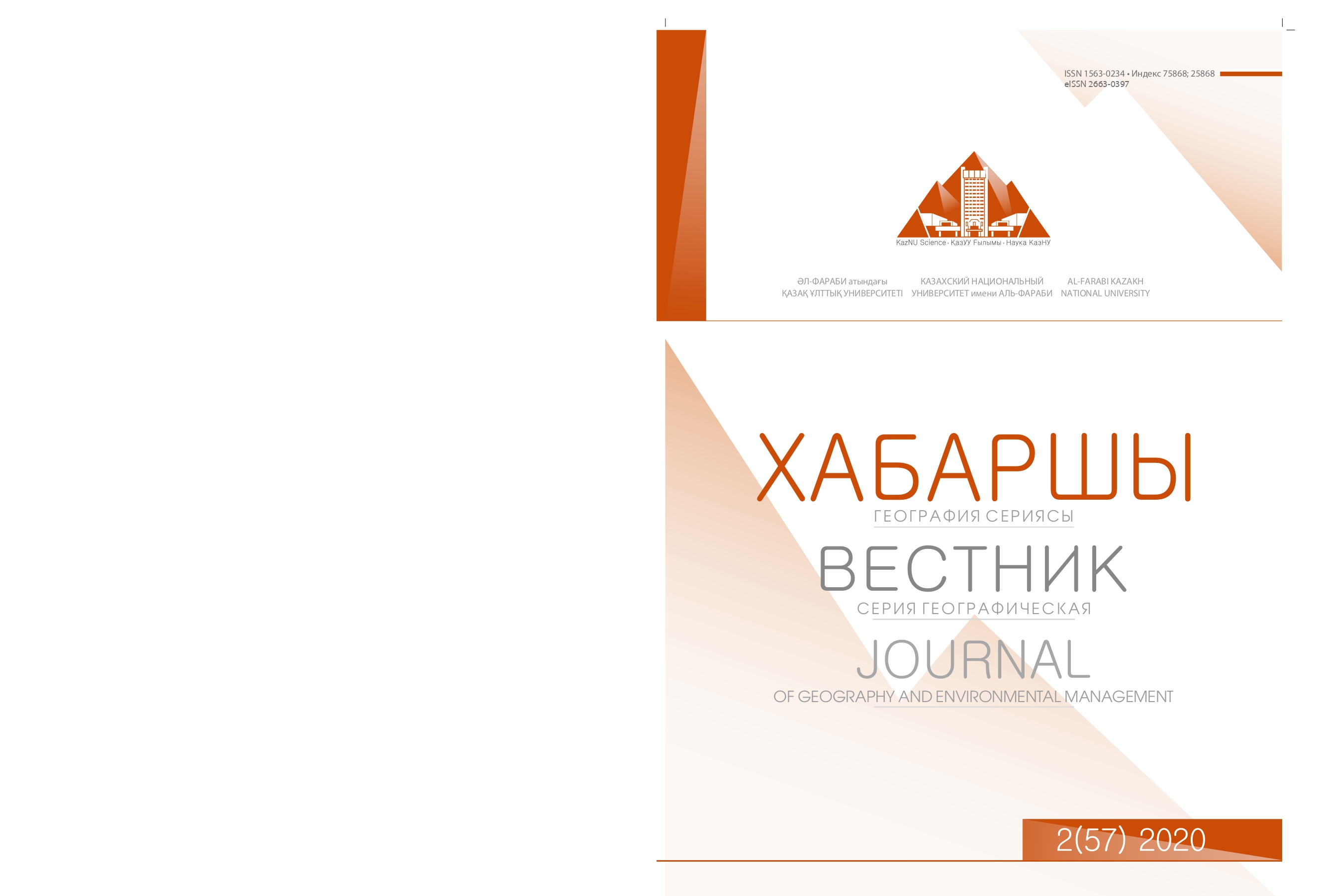Global database based on remote sensing of the Earth: on the example of the Ertis river floodplain
DOI:
https://doi.org/10.26577//JGEM.2020.v57.i2.02Keywords:
remote sensing, global database, Landsat surveys, surface water, flooding, floodplain.Abstract
Currently, due to the wide development of new technologies, many researches of surface water dynamics are being conducted on the basis of remote sensing data (RSD) and predicting the causes of changes in surface water areas. This article is devoted to the assessment of long-term dynamics of surface water areas based on remote sensing methods, using data sets of Global Surface Water Explorer (GSWE) of the Landsat archive database, as well as to identify the suitability of data from various database sets for the study area. The main object of research is the datasets of the GSWE database and the Ertis river floodplain. Due to the fact that remote sensing data requires processing a large amount of information, computer analysis and synthesis methods, complex processing and analysis tools of the ArcGIS and Python systems were used. As a result of the study, the dynamics of flooding of the Ertis River floodplain was estimated based on the results of processing data sets of GSWE using various methods and approaches of remote sensing. During the research, several processed data from the GSWE database were checked and the dataset of Yearly Water Classification was determined suitable for our study area. The value of the article is based on the use of materials obtained using the remote sensing of the global data base for studying changes in the surface water area, their processing, as well as analyzing and evaluating database sets using the example of the studied area. Using methods of remote sensing of the Earth, it is possible to study and obtain data on large territories, hard-to-reach areas of the earth, as well as to obtain longterm data. This information allows us to establish patterns of changes in surface water areas, and helps to make optimal decisions for government authorities. Materials obtained from remote sensing data can be used in various fields. In particular, when investigating areas of flooding, environmental studies, etc



